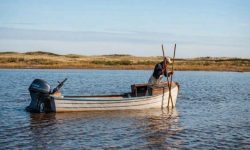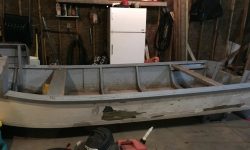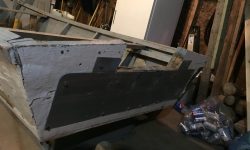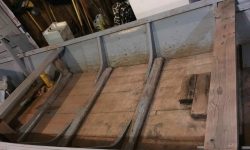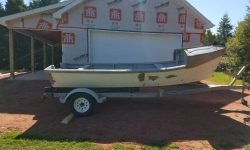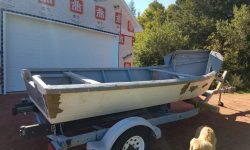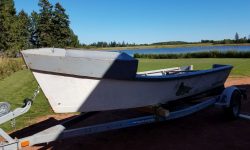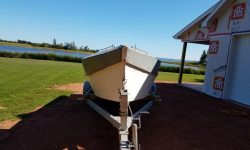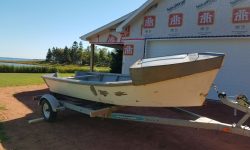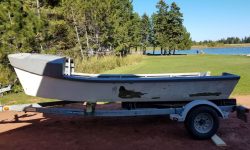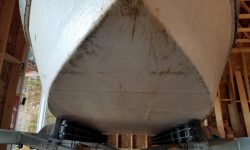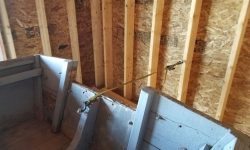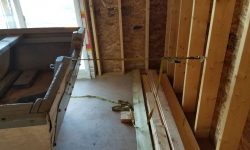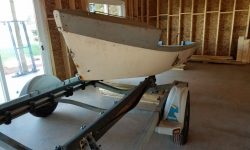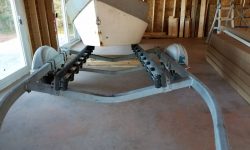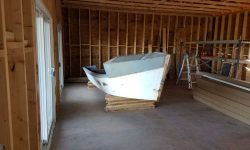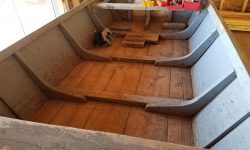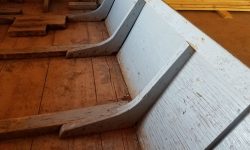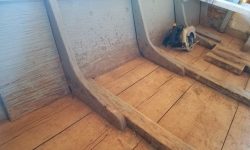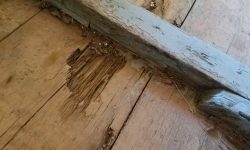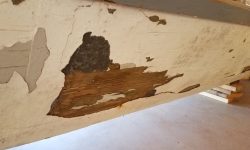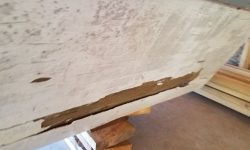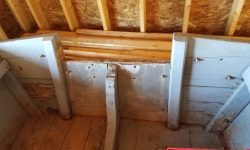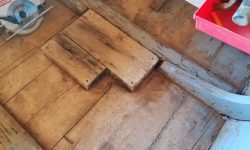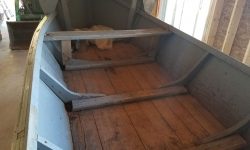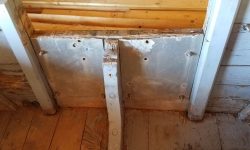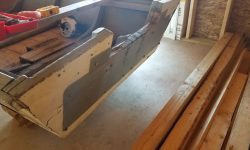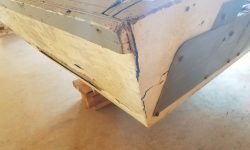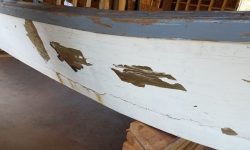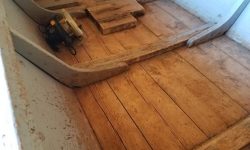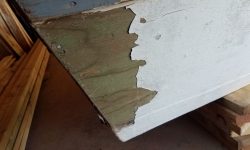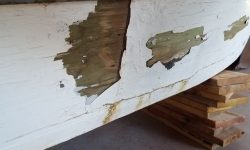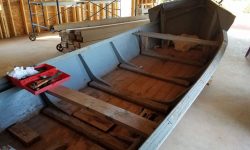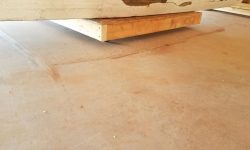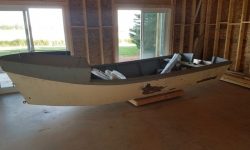October 15, 2017
Dory 1
The Prince Edward Island (PEI) Oyster Dory, a basic flat-bottomed skiff usually around sixteen feet in length, is a no-nonsense design well-optimized to the local fishing conditions. With shallow, sandy, protected waters in and around the island, this simple design, usually equipped with raised bow platforms called tong boards, appealed to me, and over the years I’d come to the opinion that the best boat for any local area should mimic the local fishing boats. I thought it’d be fun to find an old one in need of repairs and refreshing and spend a little time bringing it back to life.
While the dories all share a basic design and function, there are many different individual boats and various design and construction differences, from home-built plywood and plank-on-frame to contemporary molded fiberglass versions. After spending the summer casually searching the local want ads and online, in September of 2017 I finally found an old well-used wooden dory that fit the bill for me. Built from plywood and solid planks on the bottom, the dory was partially fiberglass-sheathed and nearly seaworthy as is, but it required glasswork, refastening, and some general maintenance, paint, and upgrades. The price was right at $100 and I thought it would be a good entry and basic project for me. These photos, taken from the original advertisement, show the basic original condition of the boat.
I picked up the boat using a trailer from another boat I had, and brought it home, where I deposited the boat in my garage to await the work.
At first, I set the boat on some piles of offcut lumber so I could get it off the trailer, which I’d soon need for another boat.
Now that I had the boat home, I spent some time going over the boat and more accurately determining the condition. My only criteria during my initial inspection before purchase was to confirm that the vessel was more or less boat-shaped and sound enough to turn in to a most basic workboat (both criteria well-satisfied, and frankly the boat could have been used as is, at least for a little while). But now I could start assessing what she would actually need, and there were myriad issues.
There were several areas of dry rot in the transom and floor (both built from solid planks), and the plywood hull sides were loose and pulled substantially away from the interior frames in most areas. The bottom of the dory had been fiberglassed about 3″ up past the turn of the bilge (polyester resin and chopped-strand mat), and this sheathing was generally sound, though the tabbing had pulled away from the topsides in some areas, most notably the transom and port after two-thirds, as well as a section on the starboard side. The plank transom had been reinforced with some thin aluminum in a stop-gap attempt to strengthen the weakening structure. The two thwarts were rough and of a stop-gap nature as well, plus there were several oddly-placed wooden blocks screwed to the floor hither and thither.
A little later I built a basic roller platform out of some readily available scrap lumber so I could easily move the boat around the shop as needed.


